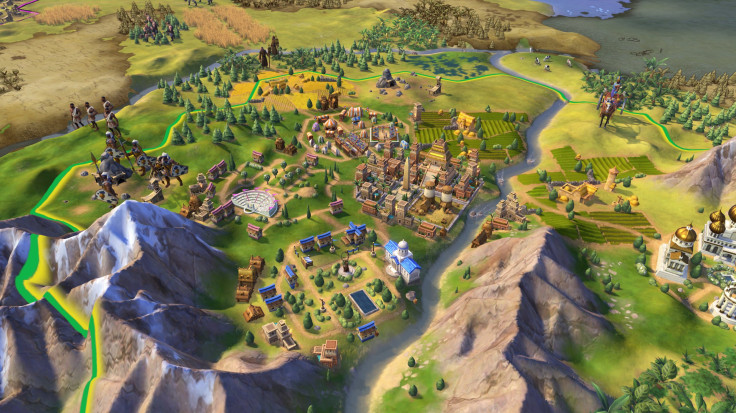Civilization 6, the next game in the landmark strategy series, is coming out on Oct. 21. The game builds on Civ V and features a whole slew of new systems, from Districts to Builders to an entirely revamped Civics system. We here at iDigitalTimes had the opportunity to sit down with a playable build of the game’s first 150 turns. Playing as Japan’s Hojo Tokimune, we learned a huge amount about Firaxis’s largest effort yet, a game that welds the best of Civ V with the best of Civ IV while adding a lot of stuff that’s entirely new. We’ve already talked about Civics and the tech tree. Next up: City States and Districts.
Districts

The much-ballyhooed Districts, the “unstacking of cities,” are presented as the signature feature of Civilization 6, the feature that truly sets it apart from its predecessors. Through Districts, cities are no longer monolithic; you can’t just build everything in the city center. To build science, commercial or military buildings, you need to spend the time and production to construct dedicated Districts around a city. Then, you can build the related improvements in these Districts, each of which takes up a full tile in the city’s radius.
Truth be told, the District system doesn’t matter that much in the early game, since the first round of improvements can be built in the city center. By the time you’re in the Classical Age, though, you’ll need to start slowly specializing your cities—and those Districts help you get bonuses toward techs and Civics, among other things. The effects of Districts toward specialization will be profound, but they all have a cost—the loss of a tile that could otherwise be productive. Of course, each District grants its own bonuses based on placement. Districts are clearly going to be a cornerstone of the strategy of Civ 6. Determining a District’s placement, and how you specialize your cities—or if you try to make one amazing metropolis that has it all—will take up a good deal of your strategic thought in the game.
City States
The way City States are handled is one of the most obvious and largest departures from Civ V—and the new approach in Civ 6 is a tremendous and refreshing improvement. Here’s the key: Under the new system, influence with City States doesn’t decay. It can only be supplanted by other civilizations. Civilizations curry favor with City States through sending Envoys, which can be earned in a variety of ways—primarily through Civics and by fulfilling City State quests. These envoys earn a player influence, which bring a variety of bonuses—some military, some cultural, among others. The player with the most influence will become the Suzerain of the City State. The City State will then be a true ally, lending a bonus unique to that City State and fighting alongside its master. Best of all, suzerain status can change freely—even mid-war.
Civ 6 has a lot of other cool things going for it, even just on a first playthrough. Trade routes, military, diplomacy, even the map itself all feel dramatically improved and refined since Civ V. The new game comes out on Oct. 21, and I am genuinely, truly excited. It feels like a new Civ game and an old one at the same time, in the best possible way.


















